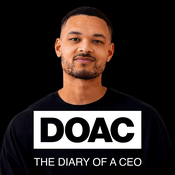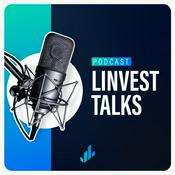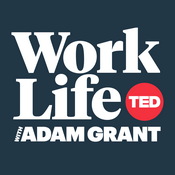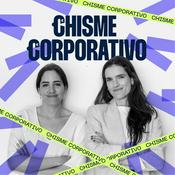Episodios disponibles
5 de 579
- Inside the Race for Net Facility Gain with Pacific FusionCarrie von Muench is the COO and Co-Founder of Pacific Fusion, a company building the first pulser-driven inertial fusion system designed for net facility gain. Fusion has long promised limitless, carbon-free, dispatchable power, but only recently have breakthroughs—from ignition at the National Ignition Facility to major advances at Sandia and new high-efficiency pulse-power technology—shifted fusion from scientific aspiration to solvable engineering challenge.The Pacific Fusion founding team came together after these 2022 milestones revealed a credible, engineering-driven path to fusion energy. Backed by a landmark $900M Series A led by General Catalyst, the company is developing a highly modular system that can be mass-manufactured using accessible materials and domestically sourced supply chains. In this episode, Carrie explains why these breakthroughs matter, how the modular pulser architecture works, why New Mexico became home for the world’s largest pulse-power facility, and how fusion could reshape global energy, industry, and security. MCJ is proud to participate in Pacific Fusion’s Series A through our venture funds. Episode recorded on Nov 19, 2025 (Published on Dec 9, 2025)In this episode, we cover: [13:28] Pacific Fusion’s origins and founding team[17:54] The company’s unique financing structure[18:57] Why traditional venture models fail for fusion[25:42] Pacific Fusion’s progress to date[27:23] What a pulsed magnetic fusion system looks like[29:15] The path from modular components to full-scale system[33:20] Looking ahead at Pacific Fusion’s 2026 milestones[35:04] Why they’re building in Albuquerque, New Mexico[41:29] The global race with China to commercialize fusion[46:24] The fusion supply chain Enjoyed this episode? Please leave us a review! Share feedback or suggest future topics and guests at [email protected] with MCJ:Cody Simms on LinkedInVisit mcj.vcSubscribe to the MCJ Newsletter*Editing and post-production work for this episode was provided by The Podcast Consultant--------52:43
- AI-Powered Infrastructure Development with Unlimited IndustriesAlex Modon is CEO and Co-founder of Unlimited Industries, a company transforming infrastructure development through AI-driven automation. Unlimited tackles one of the biggest bottlenecks in climate and industrial innovation: the outdated, risk-averse world of engineering, procurement, and construction (EPC). Traditional EPCs are often misaligned with the needs of first-of-a-kind projects. Unlimited flips the script by using AI to generate thousands of design permutations, drastically cutting feedback loops, iteration time, and overall cost. Alex shares how his background in software, combined with childhood exposure to industrial environments, inspired him to take on this hard problem—and why he believes the only way to build faster is to rebuild the entire system from the ground up.Episode recorded on July 29 (Published on Dec 3)In this episode, we cover: [03:15] An overview of EPCs[05:05] How EPCs make money[07:06] Why FOAK projects face EPC challenges[10:02] Reducing marginal cost of engineering design with AI[12:35] Alex’s pivot from software to infrastructure[15:39] Why EPCs resist adopting AI tools[19:14] Unlimited’s capital projects platform explained[23:41] How Unlimited manages physical construction[26:36] The company's vision of fully autonomous construction in the future[28:08] Why physical abundance drives Alex Enjoyed this episode? Please leave us a review! Share feedback or suggest future topics and guests at [email protected] with MCJ:Cody Simms on LinkedInVisit mcj.vcSubscribe to the MCJ Newsletter*Editing and post-production work for this episode was provided by The Podcast Consultant--------38:42
- Using AI to Supercharge Nuclear Operations with Atomic CanyonTrey Lauderdale is the CEO and Founder of Atomic Canyon, a company bringing artificial intelligence into the nuclear energy sector. Atomic Canyon recently deployed the first commercial on-site generative AI system at a U.S. nuclear facility. While AI’s growth is creating massive demand for reliable, clean baseload power, Atomic Canyon explores the reverse question: does nuclear need AI just as much to solve workforce shortages and accelerate new reactor deployment? Trey’s path to nuclear is unconventional. After building and selling a healthcare communications platform, he moved to San Luis Obispo and discovered he lived 10 miles from California’s last nuclear plant. That proximity led to applying lessons from one highly regulated industry to another. In just two years, Trey has built partnerships with PG&E and Diablo Canyon, Oak Ridge National Laboratory, and Idaho National Laboratory, the kind of institutional relationships that typically take years to establish in the nuclear industry. Perhaps that speed says something about both the urgency of the problem and the credibility of the solution.Episode recorded on Aug 12, 2025 (Published on Nov 19, 2025)In this episode, we cover: [2:49] An overview of Atomic Canyon[04:45] Trey’s path from healthcare to nuclear [08:50] The myths vs reality of nuclear power plants[10:41] Understanding nuclear’s administrative bottlenecks [12:14] How Trey started Atomic Canyon with no nuclear experience [17:59] Learning from Diablo leadership and facility[20:24] Deploying the first on-premise nuclear AI system[23:39] Security measures for data sets[29:23] Building NuclearBench with Idaho National Lab[32:02] Scaling from one plant to fleet-wide adoption[38:53] Where Atomic Canyon needs help [40:09] The company’s funding to date Enjoyed this episode? Please leave us a review! Share feedback or suggest future topics and guests at [email protected] with MCJ:Cody Simms on LinkedInVisit mcj.vcSubscribe to the MCJ Newsletter*Editing and post-production work for this episode was provided by The Podcast Consultant--------43:06
- Autonomous Construction Sites and AI-Powered Heavy Equipment with Bedrock RoboticsBoris Sofman is the CEO and Co-Founder of Bedrock Robotics, a company turning existing construction equipment into fully autonomous fleets through same-day hardware upfits. With over $80 million in funding from Eclipse, 8VC, NVIDIA Ventures, and former Waymo CEO John Krafcik, Bedrock is tackling a major bottleneck in the global economy: a massive construction labor shortage just as demand for data centers, clean energy projects, housing, and manufacturing is skyrocketing. In this episode, Boris shares how his experience building autonomous vehicles at Waymo inspired him to apply similar AI and machine learning approaches to heavy equipment. He explains why full autonomy matters in construction, what it unlocks for efficiency and safety, and how Bedrock plans to accelerate infrastructure and industrial development through robotic automation.Episode recorded on Sept 30, 2025 (Published on Nov 13, 2025)In this episode, we cover: [02:45] Boris’s background in robotics and autonomous vehicles[04:50] Learnings from Waymo applied to construction[10:09] Boris’s predictions for autonomous vehicles in the future[18:44] Why he left Waymo to start Bedrock Robotics[22:59] Choosing construction as the first market for autonomy[25:26] How Bedrock upfits machines without permanent modifications[26:25] Why excavators are the first target use case[28:20] Training AI to navigate changing job site environments[30:54] Skipping teleoperation and going straight to autonomy[35:52] Bedrock’s GTM focus on heavy industrial sectors[40:46] How to work with traditional industries effectively[43:55] How autonomy solves labor shortages and safety challenges Enjoyed this episode? Please leave us a review! Share feedback or suggest future topics and guests at [email protected] with MCJ:Cody Simms on LinkedInVisit mcj.vcSubscribe to the MCJ Newsletter*Editing and post-production work for this episode was provided by The Podcast Consultant--------49:30
- Crusoe CEO and Co-founder, Chase Lochmiller: Live Special at MCJ SummitChase Lochmiller is the CEO and co-founder of Crusoe. If you’re a regular listener, Crusoe isn’t new to the pod. This summer, Cody sat down with Chase’s Co-founder and COO, Cully Cavness, during our live event in Austin.This latest episode was recorded live at the inaugural MCJ Summit in San Francisco at the beautiful Autodesk Gallery. Cody and Chase dive into how Crusoe is building data centers at the intersection of AI and energy. Chase traces his path from MIT soccer captain and mountaineer to climate-focused entrepreneur, and how those experiences shaped Crusoe’s core values of preparation, curiosity, and speed.He shares the story behind the company’s 1.2-gigawatt Abilene, TX project, its energy-first approach to powering AI infrastructure, and his vision for an era of abundant energy and intelligence. The discussion also explores the future of AI labor, grid integration, and what digital abundance could mean for society at large.Special thanks to our MCJ Summit attendees and our kind sponsors: Autodesk Foundation, Borusan, Cedar Grove, CSC Leasing, Mitsui O.S.K. Lines, Obayashi, Palantir, and Safire Partners.Episode recorded on Oct 15, 2025 (Published on Oct 29, 2025)In this episode, we cover: [01:14] Chase’s early love of math, science, and soccer [02:42] Realizing academia moved too slow for his energy [04:32] How his entrepreneurial father shaped his path [05:05] Climbing Everest and the origins of “Think Like a Mountaineer” [09:32] Defining Crusoe as a clean AI infrastructure company [10:47] Building vertically integrated “AI factories” [16:24] Inside the 1.2 GW Abilene project for OpenAI and Oracle [20:52] Crusoe’s energy-first approach to compute build-outs [25:36] Using AI demand to accelerate next-gen energy solutions [30:24] When AI becomes a power orchestrator [33:31] Digital labor and AI’s impact on GDP and society [38:41] How Chase hopes Crusoe is remembered in 30 years Enjoyed this episode? Please leave us a review! Share feedback or suggest future topics and guests at [email protected] with MCJ:Cody Simms on LinkedInVisit mcj.vcSubscribe to the MCJ Newsletter*Editing and post-production work for this episode was provided by The Podcast Consultant--------40:04
Más podcasts de Economía y empresa
Podcasts a la moda de Economía y empresa
Acerca de Inevitable
Join Cody Simms each week as he engages with experts across disciplines to explore innovations driving the transition of energy and industry. Inevitable is an MCJ podcast. This show was formerly known as 'My Climate Journey.'
Sitio web del podcastEscucha Inevitable, Kapital y muchos más podcasts de todo el mundo con la aplicación de radio.es

Descarga la app gratuita: radio.es
- Añadir radios y podcasts a favoritos
- Transmisión por Wi-Fi y Bluetooth
- Carplay & Android Auto compatible
- Muchas otras funciones de la app
Descarga la app gratuita: radio.es
- Añadir radios y podcasts a favoritos
- Transmisión por Wi-Fi y Bluetooth
- Carplay & Android Auto compatible
- Muchas otras funciones de la app


Inevitable
Escanea el código,
Descarga la app,
Escucha.
Descarga la app,
Escucha.






































